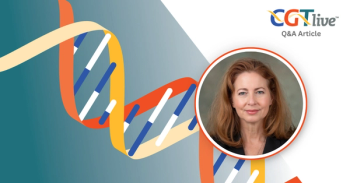
LCA1 Gene Therapy Improves Sensitivity, BCVA at Highest Dose
No serious TEAEs have been related to ATSN-101 with data up to 6 months after treatment.
The gene therapy
Data from the trial were presented at
“The goal of this phase 1/2 study was to evaluate the safety, tolerability, and efficacy of ascending doses of ATSN-101, a subretinal gene therapy for LCA secondary to mutations in the GUCY2D gene,” Kay and colleagues wrote.
READ MORE:
Data from the trial are from 15 patients with a median age of 21 years (range, 12-76), 10 of which are female. These participants received unilateral subretinal injections of ATSN-101 in 3 dose cohorts (1.0 x 1010 vg/eye, 3.0 x 1010 vg/eye, and 1.0 x 1011 vg/eye) with 3 participants each; in the expansion phase 1 adult and 1 pediatric cohort of 3 more patients each were also treated at the highest dose. The phase 1/2 trial is primarily evaluating the incidence of adverse events, while secondary outcomes are evaluating changes in BCVA and sensitivity by FST testing.
Overall, treated participants experienced a total of 63 treatment-emergent adverse events (TEAE) and 55 were related to the surgical procedure. No serious TEAEs were related to ATSN-101 and while ocular inflammation has been observed, this was infrequent, minimal, and reversible with steroid treatment. These data are up to 6 months post-treatment.
The investigators found that the 9 participants that received high-dose ATSN-101 had a significantly greater change mean from baseline in retinal sensitivity in treated eyes compared with untreated eyes at all time points: days 28 (P = .04), day 56 (P = .01), day 84 (P = .005), and day 168 (P = 0.03). Two patients treated with high-dose ATSN-101 had improvements over 0.3 logMARin best-corrected visual acuity (BCVA), and no treated eyes decreased in BCVA. Four of 5 participants treated with high-dose ATSN-101 and tested with MLMT had either a maximum MLMT score of 6 or at least a 2-level improvement from baseline or compared to the untreated eye at follow-up.
“ATSN-101 continues to be well-tolerated 6 months post-treatment, with no serious adverse events related to the drug. Clinically meaningful improvements in FST and MLMT were observed,” Kay and colleagues concluded.
REFERENCE
Kay CN, Yang P, Cideciyan AV, et al. Six-month safety and efficacy of ATSN-101 in patients with Leber congenital amaurosis caused by biallelic mutations in GUCY2D (LCA1). Presented at: ARVO 2023 Annual Meeting; April 23-27; New Orleans, Louisiana. Abstract 1914
Newsletter
Stay at the forefront of cutting-edge science with CGT—your direct line to expert insights, breakthrough data, and real-time coverage of the latest advancements in cell and gene therapy.


















































